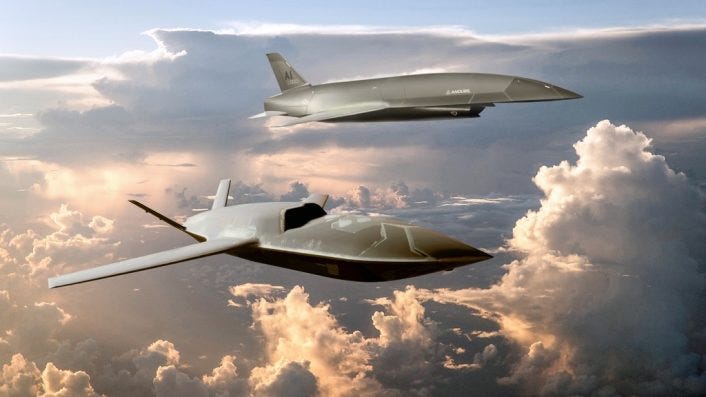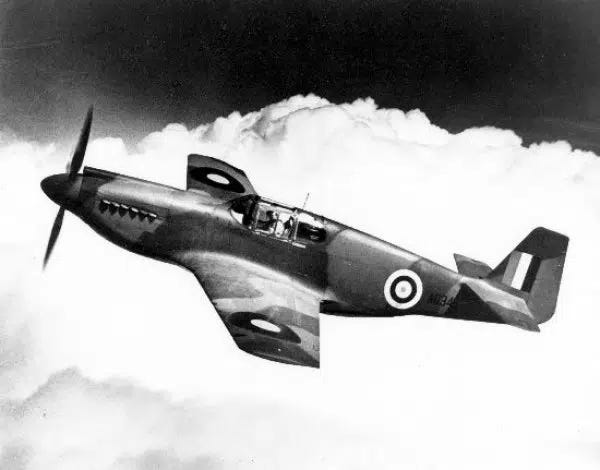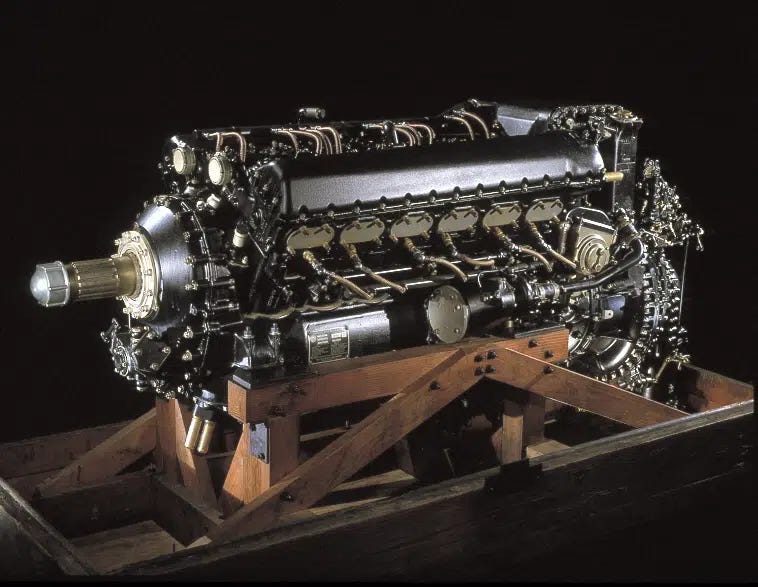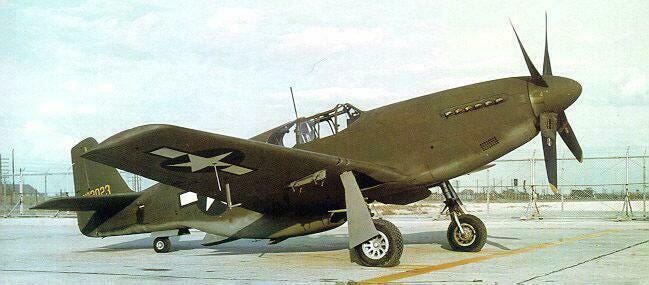⚡Rise of the Wingmen: USAF’s AI Combat Drones Enter Ground Testing
As the YFQ-42A and YFQ-44A mark a new era of autonomous airpower, we also look back at the Mustang’s first flight—an 80-year leap from piston power to machine intelligence.
“Air power is like poker. A second-best hand is like none at all.”
— General George C. Kenney, Commander of Allied Air Forces in the Southwest Pacific during WWII
Mission Briefing
The fighter sized drones are here - and will likely be wingman for today’s F-35s and a tomorrows F-47s. We are definitely stepping into a new era of aerial warfare, check the additional timeline after this article to see how far we have come.
The Rise of the Robots: USAF Begins Ground Testing on Its First Combat Drones
The future of aerial warfare just took a massive leap forward.
On May 1st, U.S. Air Force Chief of Staff Gen. David Allvin announced that ground testing has officially begun for America’s first production-representative Collaborative Combat Aircraft (CCA) drones: the YFQ-42A from General Atomics and YFQ-44A from Anduril. Alongside the announcement, the Air Force unveiled two images and a teaser video revealing Anduril’s sleek new prototype—our first glimpse at what could become the most advanced unmanned combat aircraft in history.
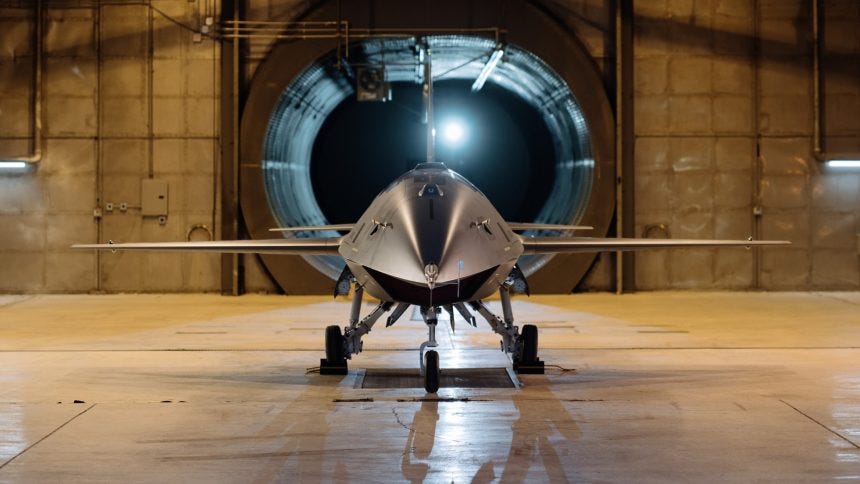
These highly autonomous drones aren’t just experiments. They’re part of Increment 1 of the CCA program, which aims to field loyal wingmen that can fly alongside crewed fighters, execute high-risk missions, and dramatically expand America’s combat reach—without putting pilots in harm’s way.
“Starting ground tests is a key milestone for the CCA program,” said Gen. Allvin. “This phase bridges the gap between design and flight, reducing integration risks and laying the groundwork for fielding to the warfighter.”
And they’re not wasting time. The Air Force selected Beale Air Force Base, California, as the future home of the first CCA Aircraft Readiness Unit (ARU)—a dedicated detachment that will keep these drones combat-ready and deployable at a moment’s notice. Interestingly, because CCAs are autonomous, they won’t require the constant flight hours of traditional fighters. That means fewer personnel, lower costs, and faster integration.
⚙️ What’s Being Tested?
Ground testing is currently underway on propulsion systems, avionics, autonomy software, and control interfaces. According to the Department of the Air Force, these tests are designed to validate system performance and pave the way for flight trials later this year. Anduril confirmed the YFQ-44 will fly this summer, echoing an earlier projection made by Gen. Allvin in March.
The designs of these aircraft remain under tight wraps, but one released photo shows a YFQ-44A inside a test chamber—equipped with a flight data boom on its nose, indicating the prototype is ready to gather precise measurements during initial flight evaluations. These are not crude mockups; they’re operationally representative vehicles built with real-world deployment in mind.
🧠 Why It Matters
The Collaborative Combat Aircraft program is more than just drones—it represents a massive shift in how the U.S. intends to fight future wars. The CCA strategy hinges on speed, cost-effectiveness, and modular open systems, allowing for plug-and-play upgrades as threats evolve. It’s a rejection of decades-long development timelines in favor of fast iteration and scalable production.
In Gen. Allvin’s words:
“The pace of innovation must outmatch the pace of the threat. CCA is how we do that.”
By building CCAs that are flexible, upgradeable, and affordable, the Air Force is aiming to out-code and out-build potential adversaries before a shot is ever fired.
🕒 CCA Program Timeline: From Concept to Combat-Ready
2019–2020
➡ Concept Emerges: The U.S. Air Force begins exploring "loyal wingman" concepts as part of its Next-Generation Air Dominance (NGAD) initiative. Early prototypes include Boeing’s Skyborg testbed and Kratos’ XQ-58A Valkyrie.
2021
➡ Skyborg Milestones: The Skyborg Autonomy Core System (ACS) successfully flies on multiple platforms, validating early autonomous flight capabilities.
May 2023
➡ Program Acceleration: USAF announces that CCA will be a key pillar of NGAD, aiming to field multiple autonomous drones per manned fighter.
March 2024
➡ Budget Commitment: Air Force earmarks over $6 billion through 2028 for CCA development and procurement.
March 2025
➡ Designations Revealed: The first two test vehicles are officially designated as YFQ-42A (General Atomics) and YFQ-44A (Anduril).
May 2025
➡ Ground Testing Begins: USAF starts testing full-scale prototypes. Beale AFB selected as home of the first Aircraft Readiness Unit (ARU).
Summer 2025 (expected)
➡ First Flight of YFQ-44A* scheduled, marking the program’s transition from lab to runway.
✈️ Enjoying the flight?
Get Hangar Flying with Tog delivered straight to your inbox—free forever. Want to go wheels-up with bonus content? Consider upgrading to a paid subscription and help keep this mission airborne.
This Week in Aviation History
5 May 1943 – The Mustang Takes Flight in U.S. Service
Eighty-two years ago this week, a legend roared to life over Los Angeles: the first production North American P-51B Mustang, serial number 43-12093, took to the skies for the very first time. Built at North American Aviation’s Inglewood plant—located at what we now know as LAX—this flight marked a critical milestone in what would become one of the most effective and beloved fighters of World War II.
Originally developed to satisfy a British contract, the Mustang’s journey began with breathtaking speed. Just 117 days after the initial request, North American rolled out the first prototype, the NA-73X, powered by the Allison V-1710 engine. Test pilot Vance Breese flew that aircraft on 26 October 1940. The RAF dubbed it the Mustang Mk.I, and quickly placed orders for hundreds more. The Mustang proved faster than both the Curtiss P-40 Warhawk and even the Spitfire below 15,000 feet—despite using the same Allison powerplant as the Warhawk.
But the true transformation came when British engineers fitted the Mustang with a Rolls-Royce Merlin engine. The results were stunning: high-altitude performance soared. In the U.S., Packard began building Merlins under license, and North American modified two P-51As to test the new Packard V-1650-3. These became the XP-51B, the forebear to the B and C variants that would escort bombers deep into enemy territory.
The P-51B and P-51C were nearly identical—B models built in California, C models in Texas. Both featured a sleek airframe, a powerful supercharged Merlin engine, and a top speed of 439 mph at 25,000 feet. Armed with four .50-caliber Browning machine guns, they had the speed, altitude, and firepower to take on the Luftwaffe and win.
In total, 1,988 P-51Bs were produced at Inglewood and 1,750 P-51Cs in Dallas, accounting for nearly 23% of all Mustangs built. These aircraft paved the way for air superiority in Europe—and changed the course of the war.
🛩️ Did You Know?
The P-51 Mustang was never initially intended for the U.S. military. It was developed on contract for the British—and only later evaluated by the U.S. Army Air Corps after seeing its impressive performance. In fact, two of the earliest Mustang Mk.I fighters were quietly handed over to the U.S. for testing under the designation XP-51, sparking American interest in the design. Without Britain’s early investment, the Mustang might never have flown at all.
In Case You Missed It
Why the F-22 isn’t quite done yet:
Photo Outlet
Every issue of Hangar Flying with Tog gets you a free image that I’ve taken at airshows:
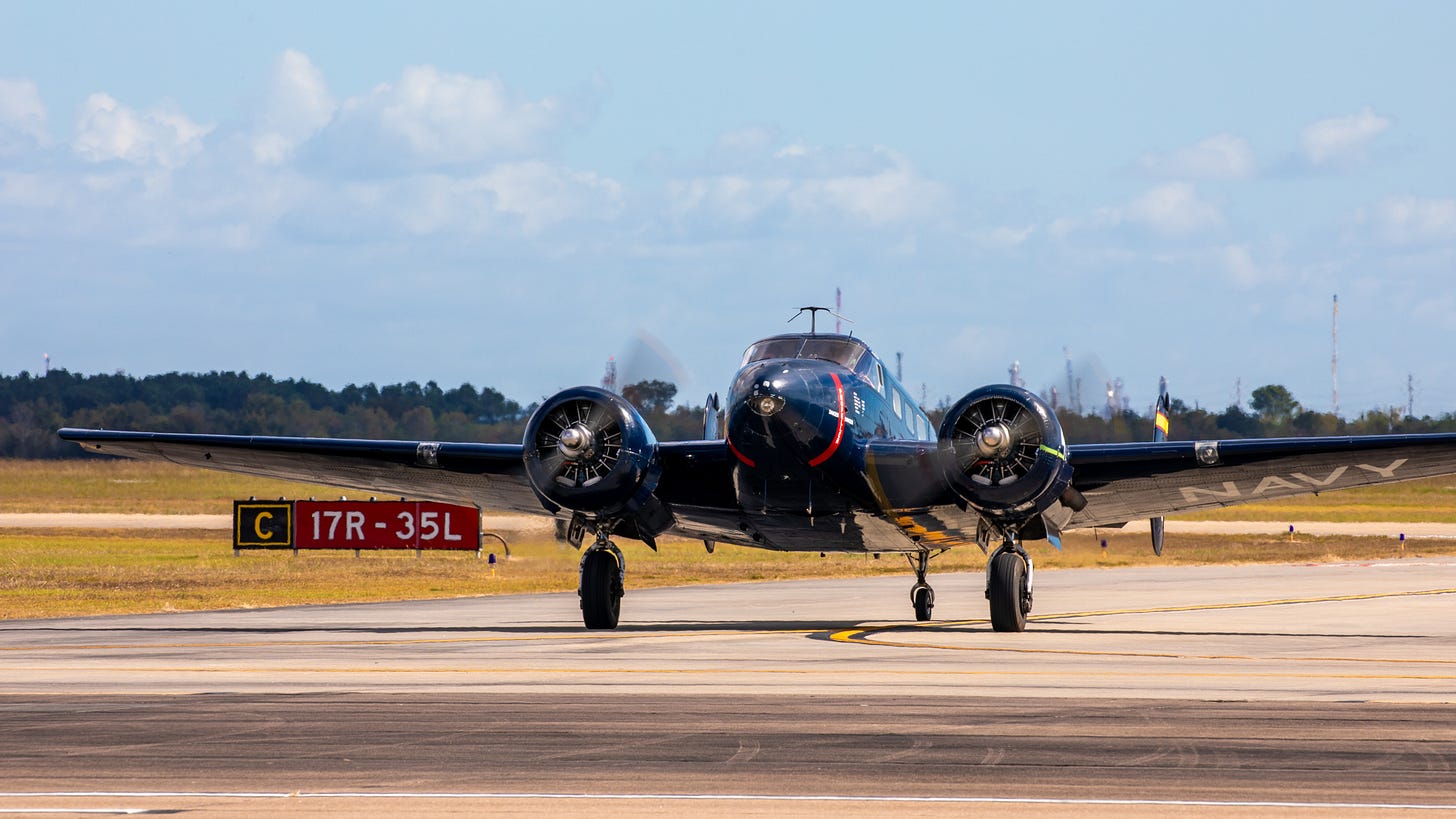
Feel free to use these photos however you like, if you choose to tag me, I am @pilotphotog on all social platforms. Thanks!
Post Flight Debrief
Like what you’re reading? Stay in the loop by signing up below—it’s quick, easy, and always free.
This newsletter will always be free for everyone, but if you want to go further, support the mission, and unlock bonus content, consider becoming a paid subscriber.
Your support keeps this flight crew flying—and I couldn’t do it without you.
– Tog



